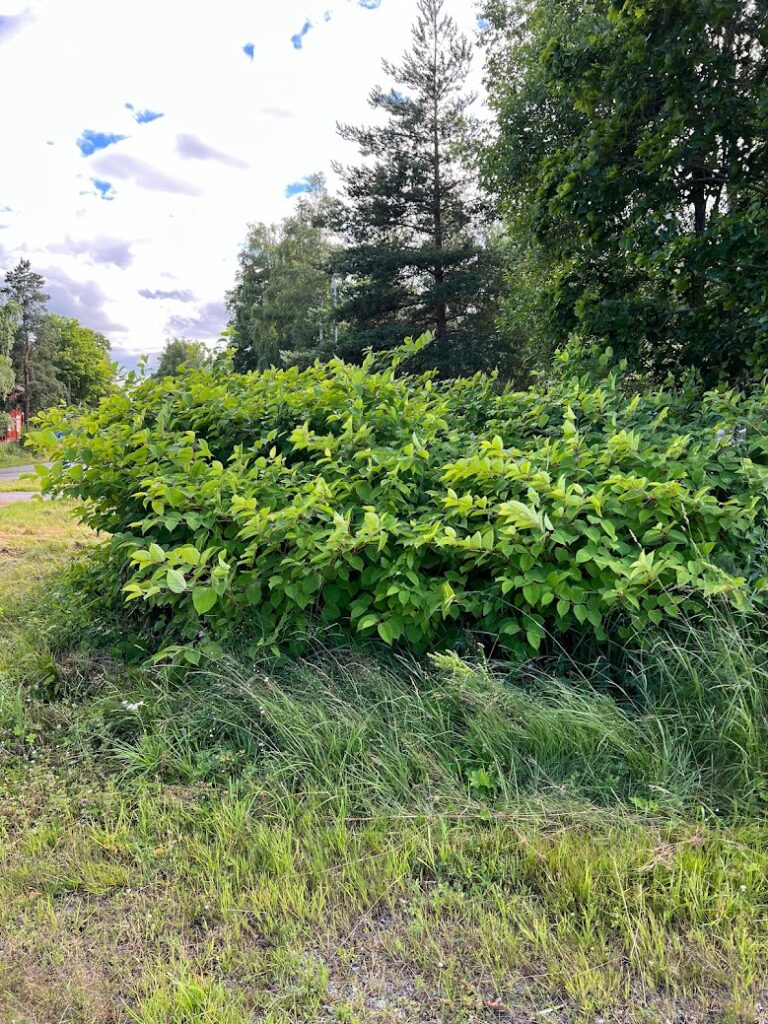Get rid of Japanese Knotweed without dig and dump
Japanese knotweed (Fallopia japonica) is an invasive plant that represents a significant challenge throughout Europe. It spreads rapidly and can cause major damage to buildings, infrastructure, and biodiversity. One of the most common methods for combating this plant is excavating contaminated soil. But how much soil needs to be removed to ensure that the plant does not spread, and what are the benefits of recycling this soil instead of disposing of it?

How much soil needs to be excavated?
Japanese knotweed has a complex root system, known as rhizomes, which can extend deep into the ground. To ensure that all knotweed is removed and cannot regrow, it is usually necessary to excavate at least 3 meters in depth and up to 7 meters in width from the plant’s origin. This is because even small fragments of the rhizomes can lead to new growth. If not done thoroughly, the plant can easily resprout and continue to spread. Consequently, up to 460 m³ of soil may need to be excavated to remove a single plant. This equates to 23 truckloads!
Disposing of soil containing Japanese knotweed is not sustainable. Disposal involves significant costs, both in terms of transport and landfill fees. Additionally, it increases the need for new landfill sites, which in itself is an environmental burden. Soil that is disposed of Japanese Knotweed must be treated as special waste, and improper handling can lead to the plant spreading from the landfill site to nearby land.
Landfilling this soil is not sustainable. Disposal contributes to increased CO₂ emissions due to transport, and it deprives us of resources in the form of soil that could otherwise be used in construction projects. It becomes a short-term solution with negative consequences for both the environment and the economy.
A much more sustainable approach is to recycle the infested soil with a SoilSaver. The SoilSaver method involves steam-treating the soil so that Japanese knotweed (and other weeds) do not survive. This process results in the soil being reused instead of going to landfill.
Benefits of SoilSaver include:
- Reduced costs: By recycling the soil, transport and disposal costs are significantly reduced. The soil can be reused locally, making it more economically viable.
- Environmental benefits: Reusing soil contributes to reduced CO₂ emissions. Both transport and the need for new landfill sites are minimized. Additionally, reused soil binds CO₂, while landfilled soil emits methane. Recycling with SoilSaver also reduces the need to extract new soil from natural sources, which helps protect the environment.
- Sustainable resource use: By recycling the soil, resources are utilized more effectively. Soil is a valuable natural resource, and reusing it allows for better management of our natural resources.
Excavating soil infested with Japanese knotweed has often been necessary to prevent the plant’s further spread. However, disposal is an expensive and non sustainable solution. Recycling the soil with technology like SoilSaver is a more sustainable alternative that reduces costs, protects the environment, and ensures the effective removal of the plant. Using such solutions is essential for managing invasive species in a responsible and forward-looking manner. Contact us to learn more.